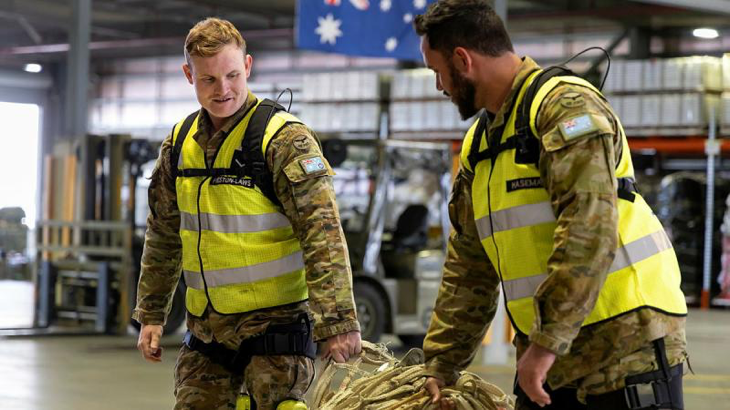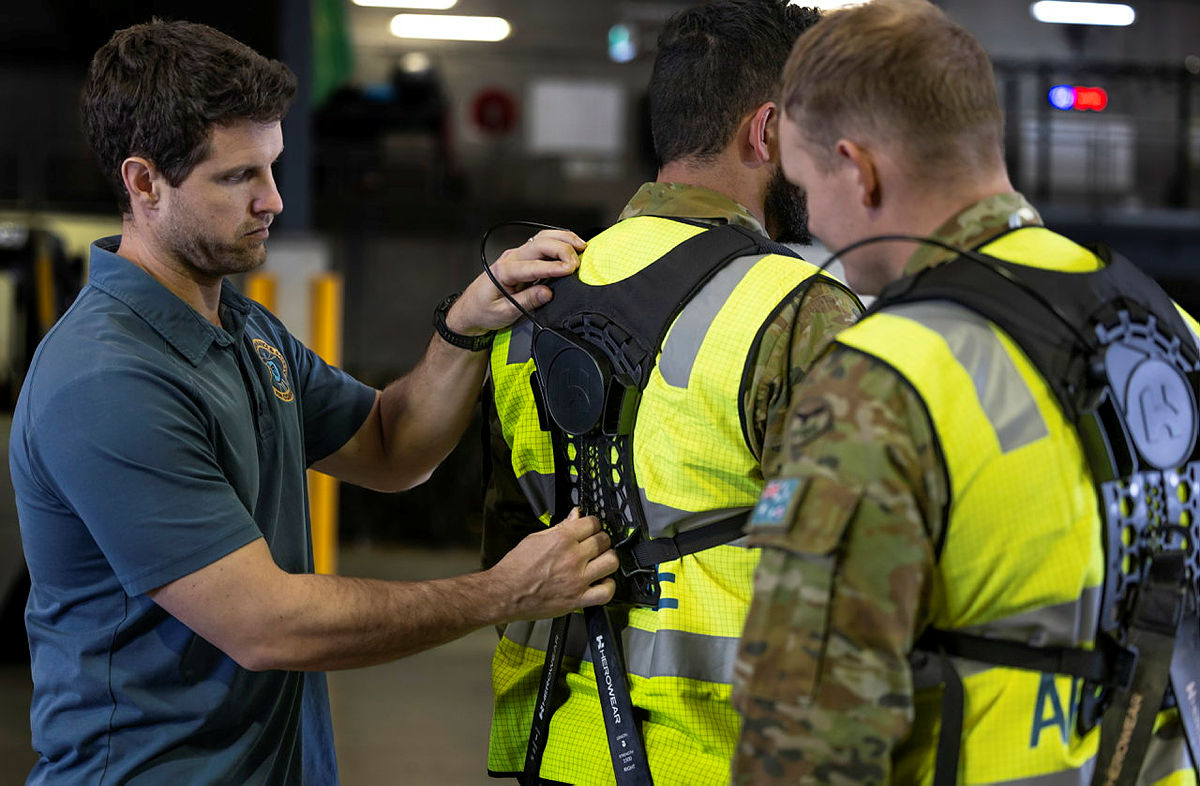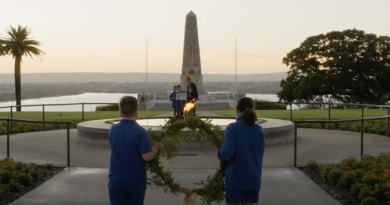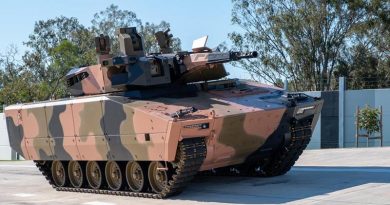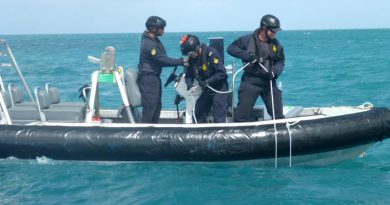New exosuit helps lighten the load

Once the stuff of sci-fi films and military prototypes, exosuits have arrived in Air Force for personnel in roles that involve regular, heavy lifting.
CAPTION: Leading Aircraftman Brandan Preston-Laws, left, and Aircraftman Luke Hasemann, of 23 Squadron, move equipment around while testing the Apex 2 exoskeleton at RAAF Base Amberley. Story by Sergeant Matthew Bickerton. Photo by Leading Aircraftwoman Taylor Anderson.
The Apex 2 is a lightweight back-assist exosuit designed to reduce fatigue and muscle strain by 40 per cent. It works with the body’s natural movements, using elastic bands that stretch as muscles extend and recoil as they contract, to assist bending and reducing strain.
Apex 2 exosuits are constructed with abrasion-resistant fabrics, engineering-grade polymers and aircraft-grade aluminium.
Squadron Leader Jessica Sutherland of 23 Squadron, responsible for air and ground movements, oversaw the rollout to her unit, which faced workforce challenges because of injury.
“My teams are building pallets, lifting passenger bags, and regularly twisting their bodies to manipulate cargo, which puts a significant strain on their bodies,” she said.
Alongside unit strength and conditioning programs, Squadron Leader Sutherland said the exosuits have the potential to reduce injuries common in the Movements mustering.
To ensure Air Force met the Australian regulatory framework for work health and safety, training was developed and implemented by Combat Support Group (CSG).
CAPTION: Deputy Physical Optimisation Lead, Stephen Smith (left) adjusts Leading Aircraftman Luke Hasemann’s Apex 2 exoskeleton at RAAF Base Amberley.
In collaboration with HeroWear and SA2050, Squadron Leader Sean Lacey from CSG designed and developed a comprehensive ‘train the trainer’ package. This initiative will equip CSG personnel with the expertise to train staff and other trainers in the safe use of the exosuit.
The training program covered operational mechanics, ergonomic benefits and safety protocols, ensuring all users could maximise the exosuit’s potential while adhering to safety standards.
“The exosuit is not a substitute for strength and endurance training,” Squadron Leader Lacy said.
“Alongside introducing the exosuit, there is still a need for initiatives focused on strength, conditioning and risk management training,” he said.
These initiatives include the CSG Movements workforce Human Performance Optimisation Program and are actively reducing risk against musculoskeletal injury, and greater physical capacity outcomes of Air Force workforces.
Movements workforce deployability has increased in the past 12 months, and the exosuit is expected to further support a continued improvement to capability through the blending of human performance enhancement using technology and biological optimisation.
Bombardier Daniel Berg from Army’s School of Artillery completed the training to trial the exosuit for his role, where gunners lift and move 43-50kg artillery rounds for extended periods.
“I was sceptical at first, but once I had it properly fitted, I was really surprised at how much pressure it relieved from my lower back,” he said.
“It helps you maintain correct technique and posture, and prevents fatigue, stopping your legs from burning out as quickly.”
Squadron Leader Lacey spent his first 15 years in Air Force as an airframe fitter, during which he sustained a back injury.
He hopes the Apex 2 exosuit is implemented across Air Force before his career ends, aiming to prevent similar injuries in others.
.
.

.
.

